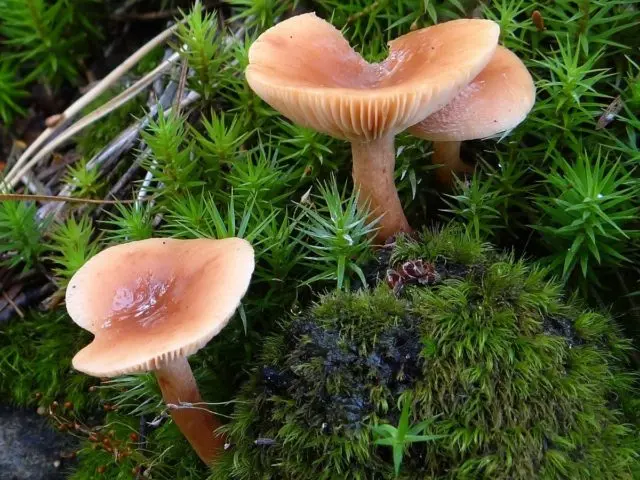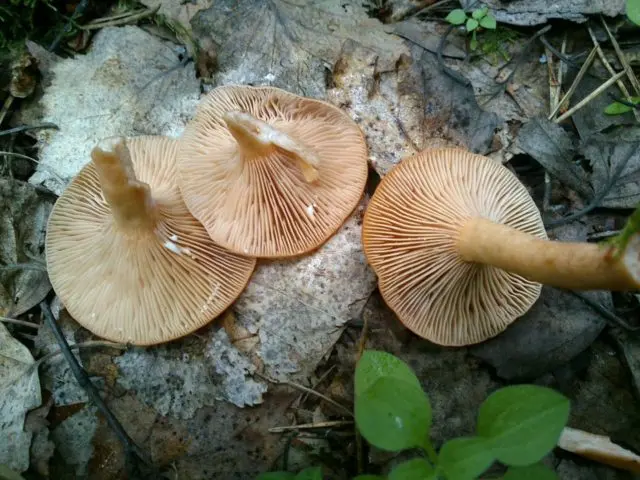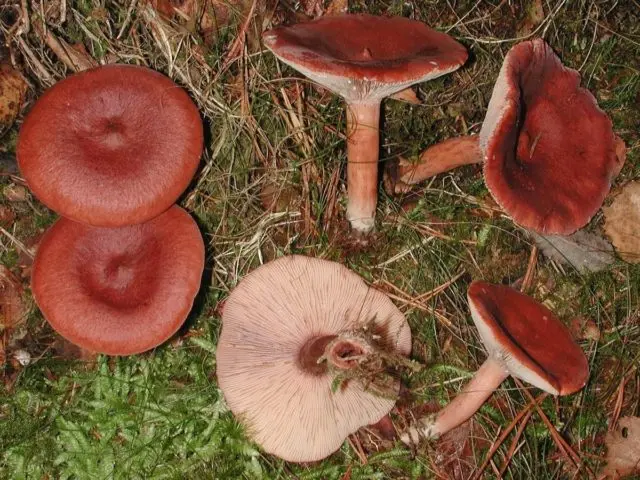Contents
The tender breast is assigned to the Syroezhkov family, the Mlechnikov family. The name of this species has a number of names: stunted milkweed, stunted breast, lactifluus tabidus and lactarius theiogalus.
Where does tender breast grow
Most often this species is found in the temperate climate zone. It grows in mixed and deciduous forests, prefers damp and mossy places. The optimal time for development is the period from July to September; under favorable conditions, tender breasts can be found in October.
What does the milky mushroom look like?

Most often this species is found in damp and mossy places.
The fruiting body consists of a cap and a stem with the following characteristics:
- Initially, the cap of the stunted lactarius (lactarius tabidus) is convex, with age it acquires a prostrate-deepened shape with a tubercle located in the center. The size varies from 3 to 5 cm in diameter. The surface is smooth to the touch, dry, painted in reddish or ocher-brick shades.
- The plates are rare, descending on the stem. Their color matches the hat, sometimes it can be a little lighter.
- Spore powder is creamy, ovoid particles with an ornamented surface.
- The leg is cylindrical in shape, expanded at the base. It reaches a height of 5 cm, and the thickness is no more than 0,8 cm in diameter. The consistency is loose, in old mushrooms cavities form inside. The color is close to the color of the hat.
- The pulp of the tender mushroom has a slightly spicy taste. The milky juice that stands out from it is not too plentiful. Initially painted white, after a while it acquires a yellowish tone.
Is it possible to eat soft breasts
This species is classified as conditionally edible mushrooms. Due to the spicy taste and long processing, it is not so often used in cooking. However, it is believed that after soaking they are good in a salty form.
False doubles

The mushroom has a bitter taste, which can be eliminated by soaking
The tender breast is similar in appearance to the following gifts of the forest:
- rubella. Also known as sweet milky. You can recognize it by a reddish-red hat with edges turned inward. The pulp of the double secretes abundant whitish milky juice, which remains unchanged under the influence of atmospheric air.

- bitterness – conditionally edible mushroom of the 4th food category. The shape and size of the hat is similar to a tender mushroom. However, the color of the fruiting body of the twin is red-brown with lighter edges, which is a distinctive feature. In addition, the milky juice of this species is white, not changing its color. Prefers to grow on acidic soils, settles under coniferous or deciduous trees.

Rules for collection and use
Going in search of forest gifts, a mushroom picker should know the following rules:
- It is advisable to collect tender milk mushrooms in dry weather, since during heavy rains they can deteriorate faster.
- It is not recommended to cut specimens with a knife, as there is a possibility of damaging the mycelium. It is better to take them out of the ground by twisting or swinging.
- Place in a well ventilated container.
The tender breast is best suited for salting. Before cooking, it is necessary to process the gifts of the forest. To do this, the fruits are cleaned of debris, leaving only the hats and soaking them for 24 hours. The infused water should be changed at least 2 times for the entire time. For hot pickling, mushrooms must be boiled for about 10 minutes.
Conclusion
The tender breast, like most lactic ones, belongs to conditionally edible mushrooms, suitable for food only after pre-treatment. In Europe, this specimen is not valued and is considered slightly poisonous. However, in Our Country it is often used for culinary purposes, traditionally in the country it is considered “pickling”.










